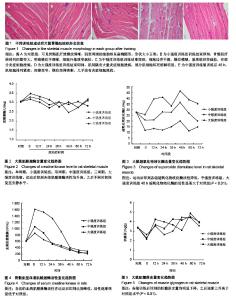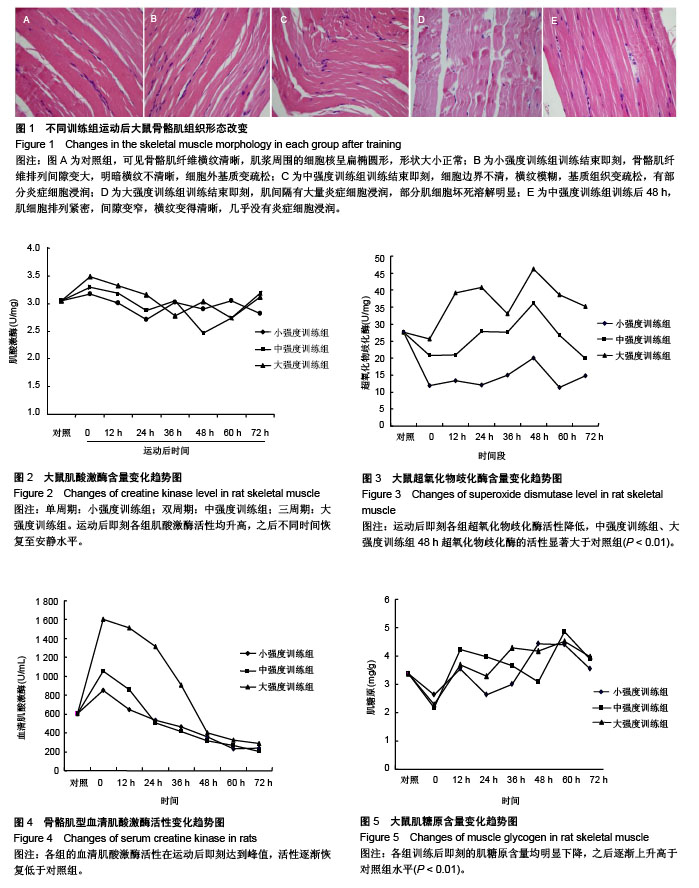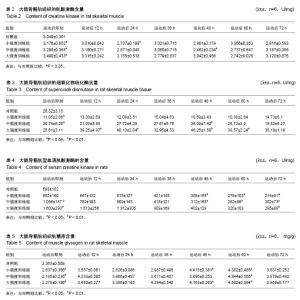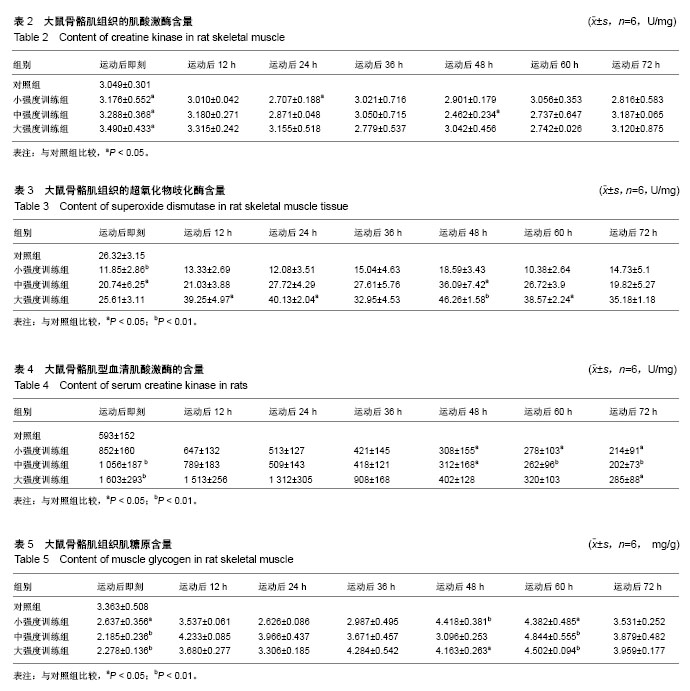| [1] 侯桂明,贡新烨,岳建兴,等.对周期训练机能的叠加效应与超量恢复原理的审视[J].南京体育学院学报,2010,6(24):117-118.[2] 姜燕,殷劲,武俸羽.糖有氧运动后骨骼肌超量恢复的相关研究[J].当代体育科技,2014,4(8):21.[3] 张灵记.糖有氧模型的建立[D].成都体育学院,2010.[4] 张静,张丽娜,阳仁均,等.不同强度有氧运动周期训练疲劳模型大鼠心肌形态变化及超量恢复规律[J].中国组织工程研究, 2016,11(20):7366.[5] 姚冰洲,许妍.运动性骨骼肌损伤的机制研究[J].疾病监测与控制,2010,4 (11):692.[6] Bursac N,Juhas M,Rando TA.Synergizing Engineering and Biology to Treat and Model Skeletal Muscle Injury and Disease. Annu Rev Biomed Eng. 2015;17:217-242.[7] 崔玉鹏,杨则宜.血清CK活性变化与运动导致的骨骼肌损伤[J].中国运动医学杂志,2004,3:343-347[8] 田聚群,王童,李益.骨骼肌适应机制与超量恢复理论[J].竞技体育,2011, 22(6):33.[9] Givli S. Contraction induced muscle injury: towards personalized training and recovery programs.Ann Biomed Eng.2015;43(2):388-403. [10] Costill DL.Skeletal muscle enzymes and fiber composition in man and female track athletes.Jappl Physiol.2006;40:149.[11] 肖建原,赵歌,郭建荣.不同负荷运动训练对大鼠肌细胞膜的影响—氧化、抗氧化及膜流动性的变化[J].北京体育大学学报,2003,26(4):472-474.[12] 朱斌,陈学龄,张业廷.糖有氧供能下不同周期游泳训练后大鼠肾脏功能恢复规律的研究[J].成都体育学院,2017,43(3):109[13] 胡尧.不同训练周期疲劳时机体及肝脏恢复规律[D].成都体育学院,2006.[14] 崔玉鹏,杨则宜,周丽丽,等.大鼠不同负荷游泳运动后骨骼肌损伤与血浆CK及其同工酶活性水平的变化[J].首都体育学院学报,2004,16(1):83-85.[15] 苏全生. 运动性骨骼肌微损伤机制_检测指标及保护手段研究[D].北京体育大学,2006.[16] 刘洪珍,孙喜良,刘桂华.有氧运动锻炼对LD含量和LDH_ALP_ACP_CK活性影响的研究[J].体育科学,2004,24(1):26.[17] Dawes DM,Ho JD,Sweeney JD,et al.The effect of an electronic control device on muscle injury as determined by creatine kinase enzyme. Forensic Sci Med Pathol.2011;7(1):3-8.[18] Kozakowska M,Pietraszek-Gremplewicz K,Jozkowicz A, et al.The role of oxidative stress in skeletal muscle injury and regeneration: focus on antioxidant enzymes.J Muscle Res Cell Motil.2015;36(6):377-393.[19] Hickner RC,Fisher JS,Hansen PA,et al.Muscle glycogen accumulation after endurance exercise in trained and untrained individuals.J Appl Physiol.1997;83(3):897-903.[20] Sano A, Koshinaka K, Abe N, et al.The effect of high-intensity intermittent swimming on post-exercise glycogen supercompensation in rat skeletal muscle. J Physiol Sci.2012;62(1):1-9. |



